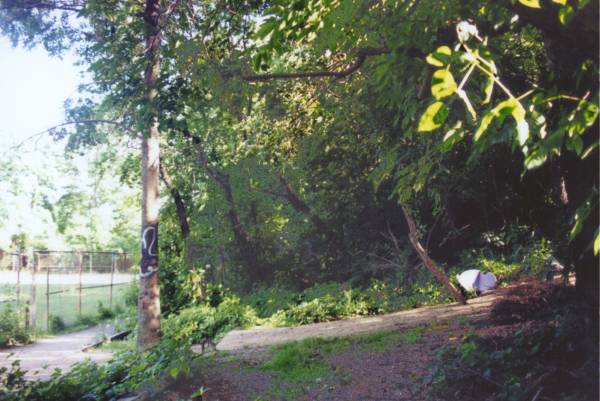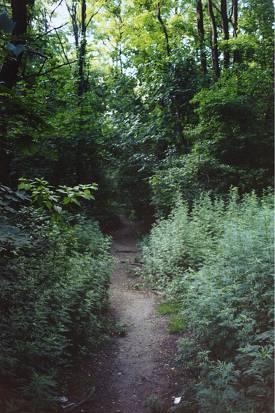
Generations of area Little Leaguers have played baseball here. I never made it past the first practice. One line drive got caught by my face instead of my glove and that was the end for me. The shame was that I had caught everything thrown me at the tryouts, held in the gymnasium at Halsey Junior High, which was my only moment spent inside that school, destined to be the arch enemy of my future junior high Russell Sage. For those who know not from junior highs today, those are middle schools. Once inside the fields, entrance onto the Dead Track ROW is just inches away.

This was the section we most often hung out around, especially since in those days of the 1960s and 70s, the ballfields were not locked . Today, they are fenced and locked, but convenient, if illicit access is available, both from dead ended intersectors off Dartmouth Street on the north and Alderton on the south, across the abandoned tracks. Needless to say, along with the easiest access, this section of the tracks is also the dirtiest and most garbage strewn.

The eastbound tracks are higher than the westbound. They are already in the process of splitting, as the westbound prepared to enter the now sealed Rego Park tunnel to join up with the main line.

Just south of the Fleet fields, the tracks traverse Fleet Street on their first overpass, built in 1908, same as the main line overpass at 63rd Drive, which actually hosted a local station serving only the Rockaway line. That station was removed when the line was shut down in 1962. It certainly has to give one pause to think, when you see this kind of growth, not just on land, but on a bridge. Need anyone wonder how entire cities have disappeared at times beneath jungle growth. This is in the heart of New York City, and it is now, in real time; our life time.

